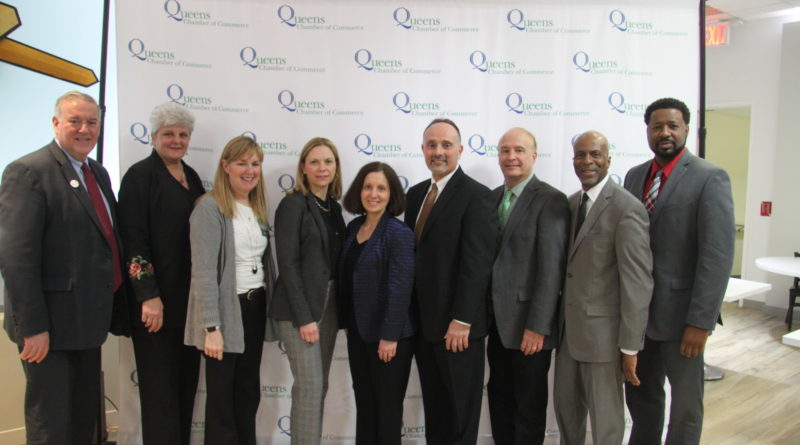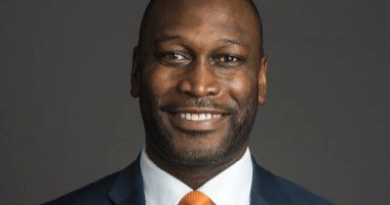Health Experts Discuss Opioid Crisis, Solutions
BY BENJAMIN FANG
In New York, the number of overdose deaths involving opioids nearly tripled in just six years, according to the state Health Department.
From 2010 to 2016, the deaths from the opioid epidemic increased from 1,074 to a whopping 3,009 just three years ago.
In 2015, 52,000 people across the country died from drug overdoses, with over 30,000 people dying from opioid drugs.
To better understand this public health crisis, the Queens Chamber of Commerce’s Health Care and Wellness Committee hosted a panel of experts to discuss signs, treatment options and challenges of the epidemic on April 2.
Tom Viola, a board-certified pharmacist, author and speaker, moderated the panel. He said everybody knows someone who’s been affected by the crisis, including people who might die of addiction.
“They’re out there waiting to be saved,” Viola said.
Terri Coyle Famularo, vice president of behavioral health at St. John’s Episcopal Hospital in Far Rockaway, said treatment options have changed drastically over the last 20 to 25 years.
For many years, she said, health experts looked at abstinence-based models, such as Alcoholics Anonymous (AA) or Narcotics Anonymous (NA), as the pathway toward recovery.
“What the opioid epidemic has demonstrated is that we cannot be so rigid in what kind of treatments we’re offering,” she said, “and how we define recovery and a good outcome.”
She said there has been a lot of support for medication-assisted treatment, in addition to NA or AA. Some are looking at a harm-reduction model, while others are emphasizing the importance of family support.
“There’s no wrong door, anything that brings somebody into the journey toward recovery is the door we want to open,” Famularo said. “That means accepting the pathway they’re determining for themselves.”
Eugene Shea, assistant director of clinical for the Transitional Services of New York, gave tips on how to approach someone who is suspected to have an opioid addiction. He said the first thing to do is talk to the person when they are not under the influence.
Shea also suggested keeping one’s emotions in check while confronting the user.
“It’s very easy to get upset or let your emotions take over,” he said. “That might push the person away or create an atmosphere where there’s an argument over whether the person needs help or not.”
He added that friends and family should make clear that they’re worried about the user, and that they care about them.
“If you’re going to encourage people to seek treatment, you want to have some sense of what the treatment options are ahead of time,” Shea said. “One of the best ways to do that is to call the National Drug Hotline.”
As a last resort, Shea recommended staging an intervention, where family and friends gather and, in a supportive way, confront the person.
“That sometimes can be very effective,” he said.
There are also physical signs that one can look for, according to Dr. Teresa Murray Amato, chairperson at Northwell Health. Some are subtle, while others are more obvious.
The first sign to look for is when someone comes in an “altered state” and is not themselves, Amato said.
Another telltale sign is when the person’s pupils are “almost not there.” Amato said that’s specific to opiate overdoses.
She suggested that people receive training in using Naloxone, a medication designed to reverse opioid overdoses.
Finally, Barbara DeMatteo, director of HR consulting at Portnoy, Messinger, Pearl & Associates, spoke about the importance of employers having policies related to substance use or abuse.
She said while alcohol, prescription medication and even marijuana may be legal in some states, employees still can’t come to work under the influence because it affects the area of employment.
“We strongly suggest there be a clearly written substance abuse policy because employees need to understand what can happen,” DeMatteo said, “and employers need to have a consistent approach of how to handle an employee who may be under the influence.”
The health care experts also discussed how to define success in a harm-reduction model of recovery. Viola noted that addiction is a disease, and the majority of those who become addicted and recovery eventually relapse.
“Being clean doesn’t mean you are recovered,” Famularo said.
Amato added that stigma around drug abuse affects everyone, across socioeconomic levels.
“At the end of the day, everyone says there’s no stigma, but there is,” she said. “The big thing we’re trying to do is take away the stigma.”
Famularo said many families go through these types of struggles. She suggested that families should surround themselves with people who have also been through it.
“There’s a lot of support out there,” she said.




